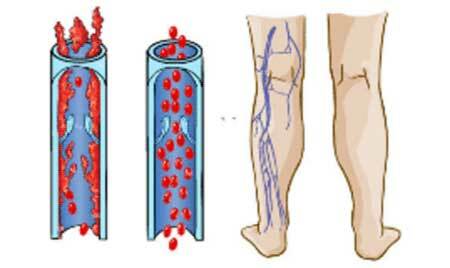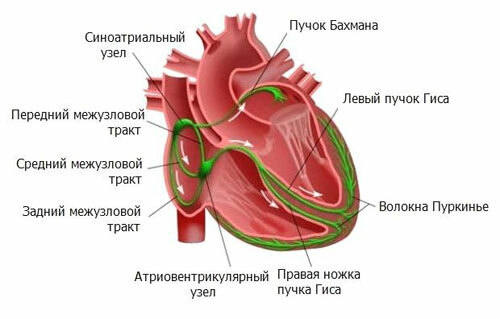Cholesterol - the most important compound that regulates the permeability of the cell membrane, is the first link in the synthesis of sex hormones and corticosteroids, protects red blood cells from the toxic effects of poisons and acts as a condition for the assimilation of vitamin D.
Bile acids are formed on its basis, which are necessary for normal digestion. The biological role of cholesterol is emphasized by numerous studies, but scientists also focus on the "bad" forms of this substance - cholesterol plaques.
What is it? In plain language, cholesterol plaques are groups of unbound cholestyrin, which fell on the walls of blood vessels. Perhaps this is too simple a definition - let's look at the whole process. Cholesterol does not dissolve in water, which makes it impossible for its free delivery to the tissues of the body. Therefore, the compound is transported in conjunction with special proteins.
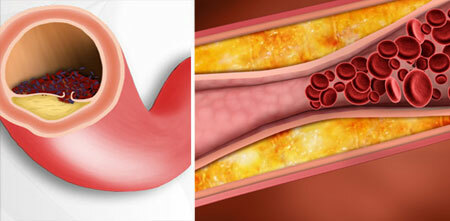
Such complexes are called lipoproteins, and there are 3 of them, the key difference is in molecular weight and density:
- High density lipoproteins( HDL).
- Low-density lipoproteins( LDL).
- Very low density lipoproteins( VLDL).
80% of cholesterol is synthesized in the human body, and only 20% comes from food. At the same time, it is transferred to cells by means of LDL and VLDL, and from them - HDL.From the liver, cholesterol is excreted successfully in the form of digestive acids, but additional reactions occur during the transport process.
In particular, this applies to low and very low density lipoproteins. It is they who hard to keep cholesterol in a bound form, which leads to the deposition of matter in the sediment near the walls of the vessels. If the compound accumulates in excessive amounts, then physicians talk about the formation of cholesterol plaques( see photo).
Contents
- 1 Causes of
- 2 Cholesterol plaques in the vessels
- 3 Cholesterol plaques on the face and eyelids, photo
- 4 Can cholesterol plaques dissolve themselves?
- 5 Treatment of cholesterol plaques
- 6 Prevention measures
Causes of
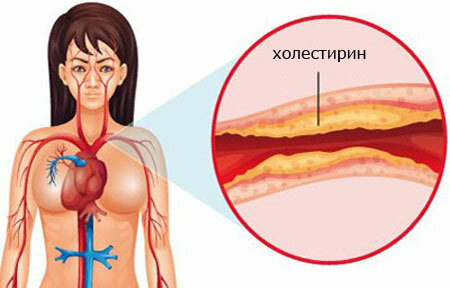
The normal concentration of low molecular weight lipoproteins in an adult is 2.58-3.36 mmol / l. In case of exceeding the values above 4.13 mmol / l, it is recommended to resort to treatment - to reduce the likelihood of developing atherosclerosis. If the result of the disease are cholesterol plaques in the vessels of the heart or brain, it is possible myocardial infarction and stroke, the mortality rate of which is leading among other pathologies.
Can the process of subsidence of cholesterol be considered pathological? No. It occurs because of the inability of low-molecular proteins to constantly be in a bound state, which is necessary for the normal performance of the biological function.
However, with a large number of LDL and VLDL cholesterol plaques precipitate excessively, gradually increase, provoke proliferation of connective tissue in blood vessels and the formation of thrombi. With prolonged process, it is impossible to avoid blockage of arteries and capillaries. Physicians identify several factors contributing to increased concentrations of low-density lipoproteins and the so-called bad cholesterol:
- metabolic disorders;
- obesity;
- sedentary lifestyle;
- improper power supply;
- hepatic dysfunction;
- endocrine failure;
- heredity.
Obesity, among other things, is considered the most likely cause of excessive formation of cholesterol plaques. Excess weight appears due to a violation of metabolism and the prevalence of fatty and saturated with simple carbohydrates in the diet. If at the same time a person almost does not eat vegetable products and vitamins, then the body simply does not have time to process incoming compounds, putting them aside for storage.
And animal food, in turn, contains a large amount of cholesterol, the concentration of which at some point exceeds the allowable rate with an irrational approach to nutrition.
Excess weight often provokes liver dysfunction - this is fraught with a violation of the synthesis and excretion of bile in the intestine. Those.and cholesterol also will not leave the body. In addition, a failure in the liver often occurs due to alcohol abuse or long-term use of medications - these factors should always be considered when treating.
In youth, the clogging of blood vessels is practically not diagnosed, since a person is in full bloom, and all serious sores avoid( except, of course, in congenital pathologies).Usually problems appear closer to old age, when the intensity of physiological processes gradually fades.
Cholesterol plaques in
vessels Cholesterol is transported to tissues along arteries by low-molecular lipoproteins. In this regard, this type of blood vessel suffers first of all. With the passage of time, the clogged arteries narrow, the passage of the formed blood elements becomes more difficult, which naturally leads to a disruption in the supply of tissues with nutrient compounds and oxygen.
This process is expressed in the following symptoms:
- headache;
- dizziness;
- impairment of mental activity( poor memory, concentration, etc.);
- deterioration of the sensory organs;
- pain syndrome in the area of plaque localization;
- sensation of heaviness in the body;
- increased fatigue;
- is a nerve disorder.
The internal sensations depend on the localization of the plaques. For example, if the arteries are blocked on their feet, the person will experience excessive fatigue when walking. If the plaques are concentrated in the coronary vessels, then pain in the heart, arrhythmia and other disorders are possible. Pull with treatment can not, because suddenly torn off clot can clog up several arteries and provoke a fatal outcome.
Cholesterol plaques on the face and eyelids, photo

Cholesterol plaques on the eyelids, photo
Plaques formed on the eyelids and face are called xanthelasm. They are usually localized either under the eyes or in the inner corner of the upper eyelid. In appearance, these are yellow plates protruding above the skin, inside which cholesterol and triglycerides are concentrated.
By themselves, such plaques are not dangerous and do not affect the organs of vision in any way. However, xantelasms are the first sign of a violation of lipid metabolism in the body, so it's not worth to ignore neoplasms.
In addition, removing cholesterol plaques from the face is very problematic. Usually they resort to surgical methods, but often patients return to the hospital repeatedly with complaints of relapse.
One important point: if plaques are present on the face, most likely they will be in the vessels. In this case, a person recommends a comprehensive examination and clarification of the situation. If necessary, get an adequate course of treatment.
Can cholesterol plaques dissolve themselves?
This question is asked by most people who do not want to take medication. Self-dissolution of cholesterol plaques can be achieved by a special diet, the essence of which is to limit the intake of fats and simple carbohydrates. Thanks to this, the body will intensively use internal reserves, which will help get rid of "excess" cholesterol.
So, you need to eat such products:
- vegetables and fruits in any quantity;
- dairy products( fat content is less than 1.5%);
- whole-grain cereals;
- fish;
- chicken.
From fried and fatty foods, baked goods and sweets will have to be abandoned, at least until the restoration of normal metabolism. If a person has detected excessive deposits of cholesterol plaques, the diet may be impotent. In this case, resort to therapy.
Treatment of cholesteric plaques
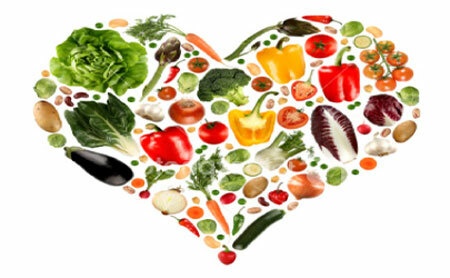
To purify blood vessels from cholesterol plaques and blood clots, doctors prescribe specific medications. The course of treatment often lasts a long time, but it all depends on the severity of the disease. To return the vessels to a normal state the following groups of drugs will help:
- Statins. They inhibit the natural synthesis of cholesterol in the body.
- Fibrates. Accelerate the work of lipases, leads to a faster breakdown of fats and cholesterol.
- Sequestration of bile acids. Prevent the absorption of cholesterol and bile in the intestine.
- Nicotinic acid( vitamin PP).Activates the metabolism of fats.
One single agent for cholesterol plaques is usually not prescribed. As a rule, doctors prefer a complex approach, which eliminates problems with a low level of metabolism - the main cause of the disorder. If the medicines and diet did not lead to a positive result, then surgery( shunting, stenting) may be necessary.
Prevention measures
Statistics show that vegetarians suffer from clogging of blood vessels very rarely. This fact does not require the complete abandonment of animal food, but it is still worth thinking about making the right diet.
To reduce the likelihood of excessive formation of cholesterol plaques, doctors recommend the following preventive measures:
- to limit the consumption of fatty and smoked food;
- switch to 5 meals a day;
- eat a lot of vegetables and fruits;
- at each meal, eat no more than 1 teaspoon of fat( required to remove bile in the intestines);
- engage in a mobile sport at least 2 times a week.
Doctors believe that with regular physical activity, metabolic processes in the body are also activated. Simply a person needs energy, which will not be deferred, but consumed immediately. Blood flow also plays a role: in physical exercises, lipoproteins( and all other components of the blood) circulate faster. And although the cholesterol still precipitates, but does not stick to the walls of the vessels.
Treatment of cholesterol plaques in the vessels is not recommended to be shelved. Clogging of the arteries often leads to a violation of the blood supply to organs, which is fraught with not only a general decrease in vitality, but also a fatal outcome from a heart attack or stroke.


